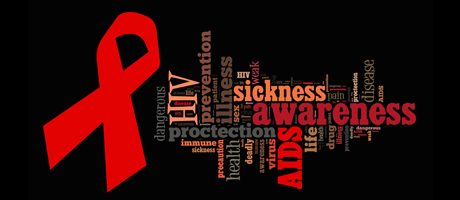In minority communities, battling HIV requires a broader lens to see the bigger societal picture.
It’s an unfortunate reality for many in low-income racial and ethnic minority communities: Unemployment is disproportionately high, crime is an ever-present problem, access to affordable health care can be nonexistent, and the struggle to pay rent and keep food on the table is a daily challenge. For these communities, the last thing on anyone’s mind is AIDS.
Or, to quote one of the hundreds of African-American men that Professor of Applied Social Psychology Lisa Bowleg, pictured at right (top), has interviewed for her studies involving HIV prevention and social structure stressors: “As a black man, I’ve got 99 problems and I’m sure not thinking about HIV.”Professor of Clinical Psychology Maria Cecilia Zea, at right (bottom), heard similar statements in her research on HIV among Latino men in cities from Washington, D.C., to Bogota, Colombia. Across races and sexual orientation, Bowleg and Zea say men from minority communities face many of the same stresses and challenges. While they are prime candidates for HIV interventions, the reality of their life-situations blocks their opportunities to make healthy choices. Whether it’s racism, disproportionate incarceration, or lack of affordable educational outlets, social-structural forces keep getting in the way.
According to the Centers for Disease Control, African-American men in the U.S. make up 13% of the population, but account for two-thirds of new heterosexual HIV infections among men. The numbers are just as staggering for Latinos, who make up more than one-fifth of all new HIV infections in the U.S.
Why does the disease continue to sweep through minority communities despite numerous efforts to curtail its spread? Bowleg and Zea are among a burgeoning cadre of researchers who say they may have an answer. Funded by grants from the National Institutes of Health, both have performed qualitative and quantitative studies with men at risk of HIV. Bowleg primarily works with heterosexual African-American men, while much of Zea’s research focuses on gay and bisexual Latino men. Through in-depth interviews, each is probing life histories as well as socio-economic circumstances to better inform their analysis and understand the problem.
After hearing hundreds of men detail their struggles with everything from masculine identity to police harassment, the pair have come to a conclusion that is increasingly emerging within the research community: Our current anti-HIV efforts, focused almost exclusively on imparting information and changing individual behaviors, may not provide a complete picture of how and where the virus may strike. Instead, they say, it’s time to look at HIV through a broader lens—one that places the disease in a wider social structural context. For example, with some populations, the key to stopping HIV is more complicated than convincing individuals to alter their actions. It involves interventions that influence whole social, political, and economic environments—and recognizes the complex interplay of day-to-day social-structural struggles that hamper success.
“Focusing on individual risk factors doesn’t really tell the whole story about the epidemic,” Zea said. “There are larger macro-forces that are hard to measure, or even conceptualize, but that need to be addressed.”
Structural Intervention
HIV-prevention strategies have traditionally dealt with individuals on a one-on-one basis and focus on behavioral changes, such as increasing condom use or teaching people to make safe choices. Many of these strategies have proven successful but, according to both Zea and Bowleg, this approach requires enormous resources to reach a limited number of people. And it may be less effective among communities where factors such as unemployment and incarceration can impede healthy choices. As Zea noted, the individual model relies on rational decisions but “sex is not always rational.”
Structural interventions can bolster HIV-prevention, but they are often not directly related to the disease. For example, people may grasp how living in a neighborhood with a liquor store on every corner promotes heavy drinking; or how a community with more fast food joints than fresh food stands can have ties to obesity. “Sexual risk is much different,” said Bowleg. “It’s much easier for us to look at sexual risk through an individual lens. It’s hard for people to realize that when we talk about jobs, we are talking about HIV.”
Likewise, structural interventions are often hindered by biases and stigma that scapegoat sexual and racial minority populations. Focusing on individual behavior promotes judgments about who is “deserving and undeserving,” Zea said. “It’s too easy for people to say: ‘See, these people are promiscuous, use drugs, or are gay. That’s why nothing works with them.’”
Zea applauds structural HIV-prevention efforts like needle exchanges and cash-transfers to improve the lives of poor women in countries like Malawi and India. She and Bowleg are also optimistic that the HIV-research community has begun to embrace interdisciplinary and collaborative research. More efforts aim to frame interventions in a broader context—one that addresses factors that put entire communities at risk. “This involves people of all disciplines working hard together,” Zea said. “No one can do this alone.”



